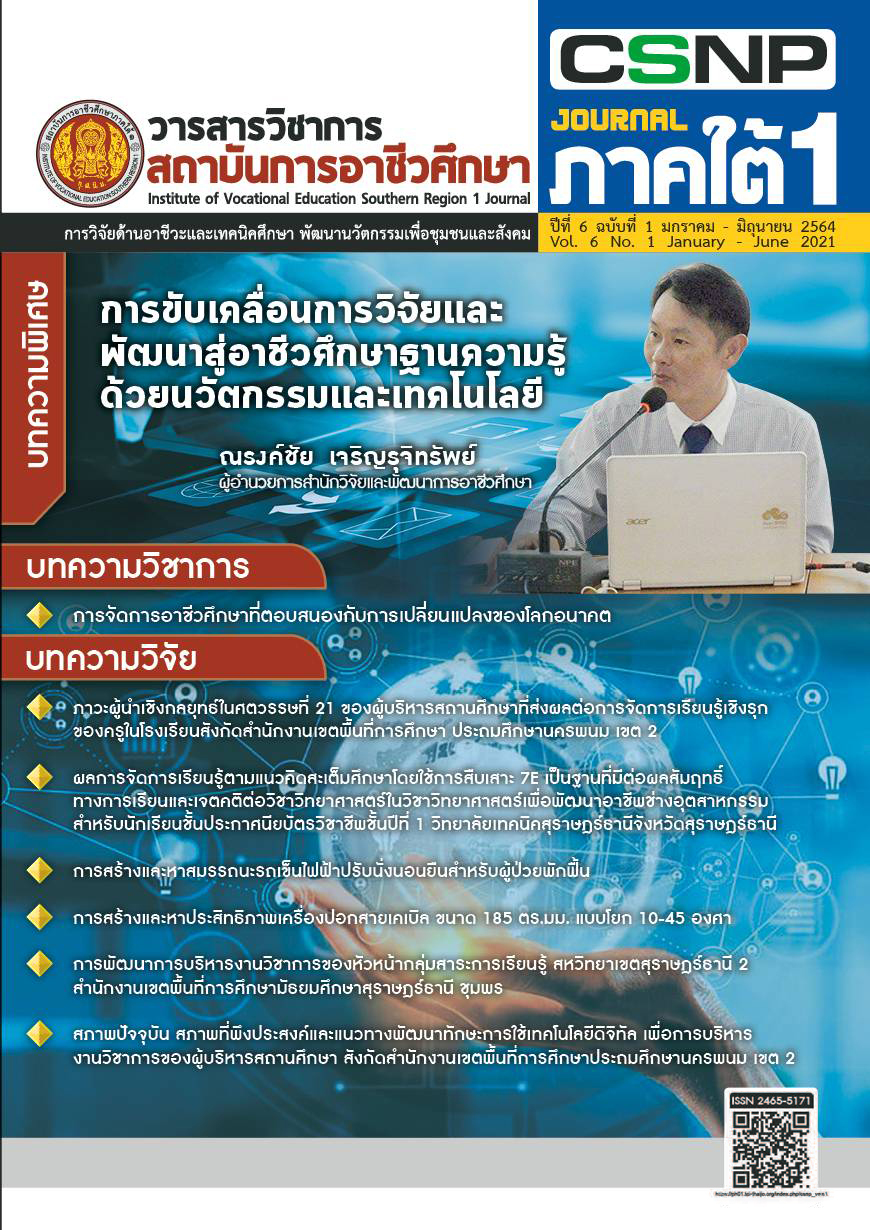The Environment and Social Evolution of Local Lifestyle of weaving Community in Surin Province
Keywords:
Environment, Surin Province, Handicraft Community, One Tambon One Product, Handicraft Woven FabricAbstract
This article aims to study the current conditions adaptations and changes of community lifestyle, handicraft weaving community entrepreneurs, in Surin, after participating in and developing handicraft weaving products in accordance with the OTOP project. Previously, handicraft weaving was only a supplementary occupation for farmers during their free time from agricultural work. With the frequent OTOP product exhibitions, there might be an effect on the community life style. This research is a qualitative research. The research tools include the documentary study, the survey with a semi-structured questionnaire, and in-depth interviews with relevant people, especially the community entrepreneurs and individual entrepreneurs in Surin. Twenty-nine entrepreneurs participating the handicraft distributing booths in the OTOP MIDYEAR 2019 at Impact Muang Thong Thani, during 15-23 June 2019 joined the study.
According to the study, it was found that: 1) based on the documentary study, it was found that the environmental, raw materials and production sources in this area are important cultivation and handicraft weaving community. This is an important part that promotes the integration of groups to develop the local wisdom. 2) The results of the questionnaire analysis and in-depth interviews showed that handicraft weaving in the community is an ongoing activity which is not only done during their free time from agricultural work. 3) The majority of the weavers are between 30-50 years old. They are not only the elderly and retirees. This is an important observation showing the trend of career succession of wisdom in community. 4) Training on marketing promotion mechanism from the government sector and the annual OTOP product fair, which is held frequently are an important channel for adjustment and changes in the lifestyle of the community to be self-reliant and sustainable.
References
สำนักเลขาธิการคณะรัฐมนตรี. (2548). [ออนไลน์]. นโยบายการพัฒนาเศรษฐกิจชุมชน กรณีโครงการหนึ่งตำบลหนึ่งผลิตภัณฑ์. [สืบค้นเมื่อวันที่ 28 กรกฎาคม 2561]. จาก https://cabinet.soc.go.th/soc.
เศรษฐสยาม. (2552). ระบบเศรษฐกิจทุนนิยมกับความพอดี. ในวิสาหกิจชุมชน กลไกเศรษฐกิจฐานราก (พิมพ์ครั้งที่ 3). กรุงเทพมหานคร : ศูนย์ศึกษาเศรษฐศาสตร์การเมือง จุฬาลงกรณ์มหาวิทยาลัย.
ฉัตรทิพย์ นาถสุภา. (2544). มิติทางวัฒนธรรมในยุคเศรษฐกิจพอเพียง. รายงานการสัมมนา วันที่ 17 ธันวาคม 2542 ณ หอประชุมศูนย์มานุษยวิทยาสิรินธร. กรุงเทพมหานคร : ศูนย์มานุษยวิทยามหา-จักรีสิรินทร.
ศูนย์หม่อนไหมเฉลิมพระเกียรติสมเด็จพระนางเจ้าสิริกิติ์ พระบรมราชินีนาถ จังหวัดสุรินทร์. (2556). [ออนไลน์]. ฐานข้อมูลหม่อนไหมสุรินทร์. [สืบค้นเมื่อวันที่ 26 สิงหาคม2561]. จาก https://qsds.go.th/qssc_srn/index_web.php.
เมธ์วดี พยัฆประโคน. (2559). ผ้าไหมทอมือพื้นบ้าน ในเขตพื้นที่จังหวัดสุรินทร์. วารสารสถาบันวัฒนธรรมและศิลปะ, ปีที่ 18 ฉบับที่ 35 กรกฎาคม - ธันวาคม 2559, 94-105.
ศิริพร ยศกมลเศรษฐ. (2552). เงินไม่ใช่เป้าหมายของการพัฒนาเศรษฐกิจชุมชน. ในวิสาหกิจชุมชน เศรษฐกิจฐานราก (พิมพ์ครั้งที่ 3). กรุงเทพมหานคร : ศูนย์ศึกษาเศรษฐศาสตร์การเมือง จุฬาลงกรณ์มหาวิทยาลัย.
กรมประชาสัมพันธ์. (2561). [ออนไลน์]. โครงการส่งเสริมและพัฒนาอาชีพหม่อนไหมเพื่อผู้สูงอายุ. [สืบค้นเมื่อวันที่ 20 สิงหาคม 2561]. จาก https://pr.prd.go.th/surin/ewt_news.php?nid=7802&filename=index.



